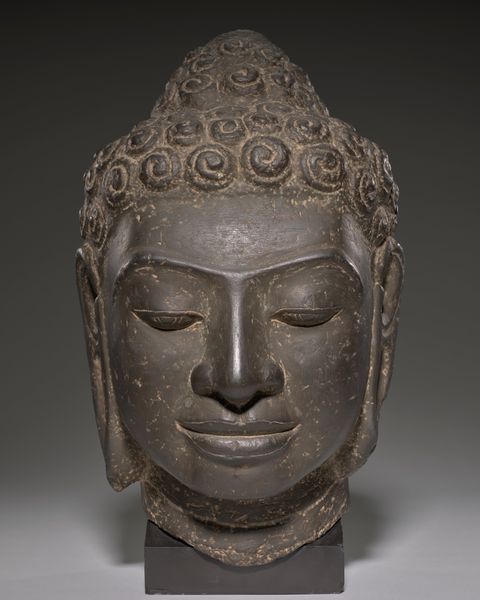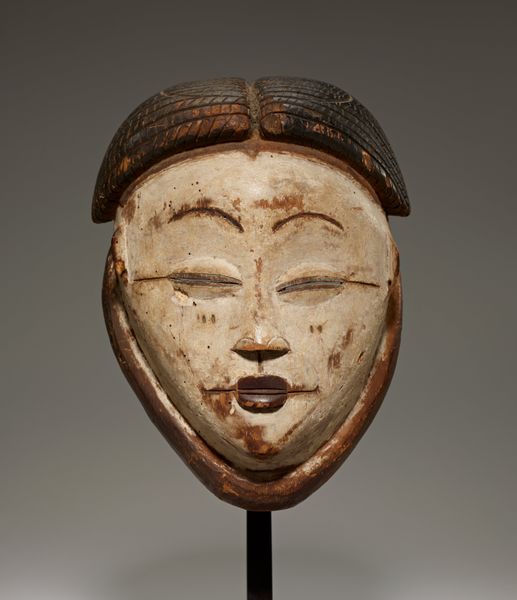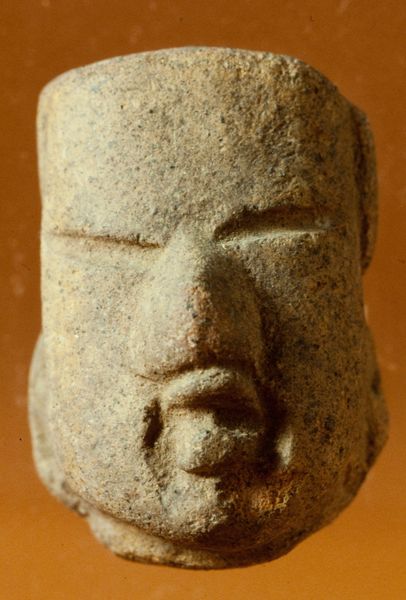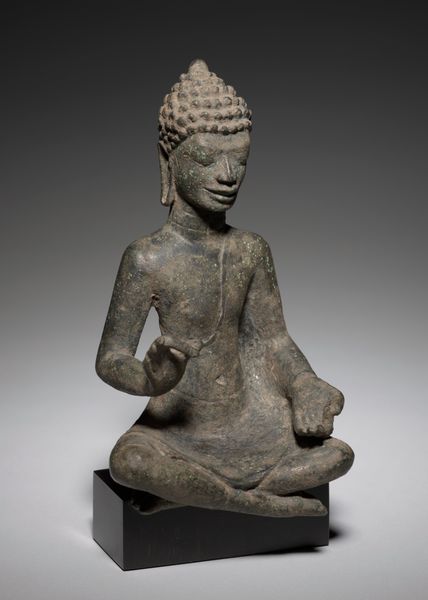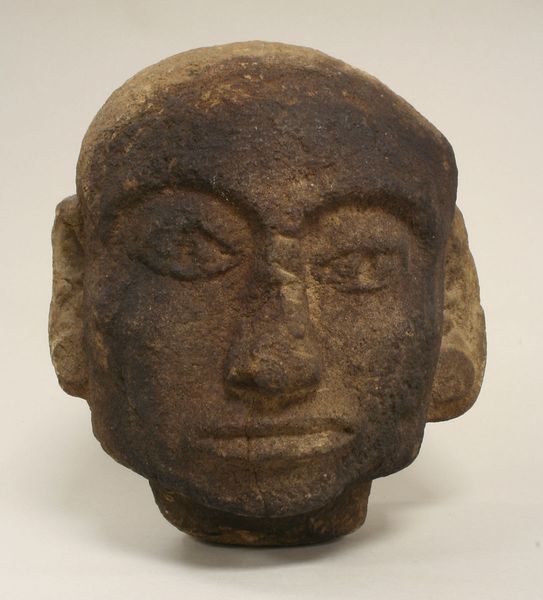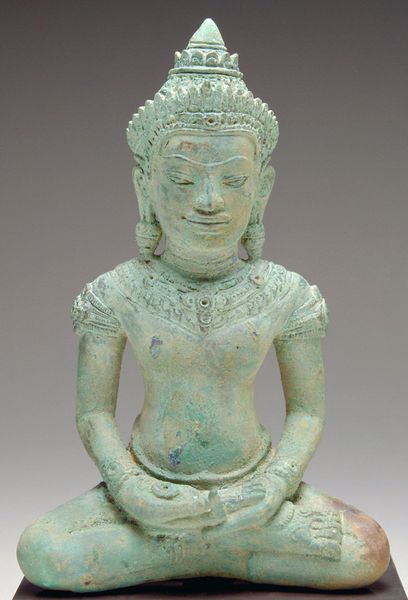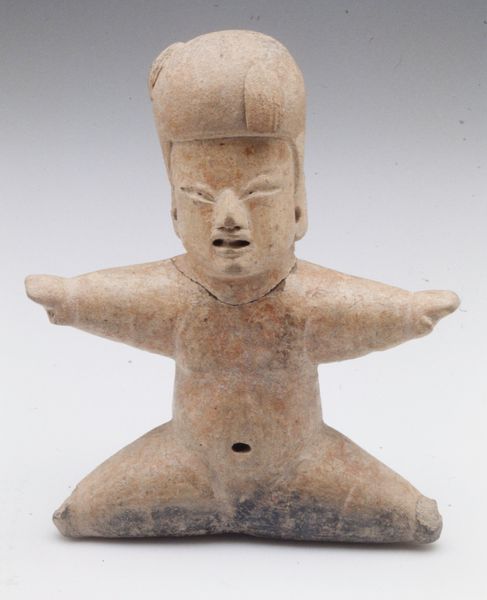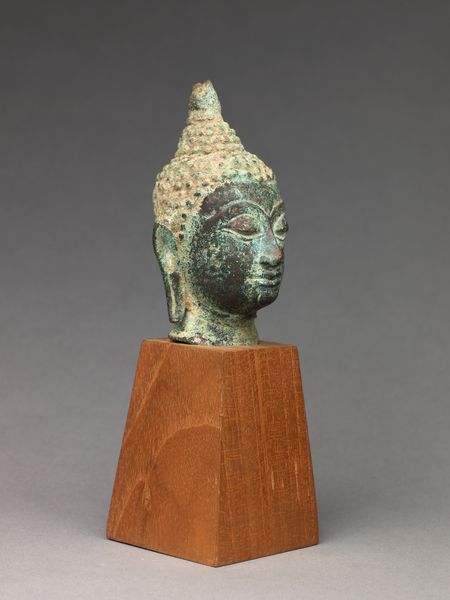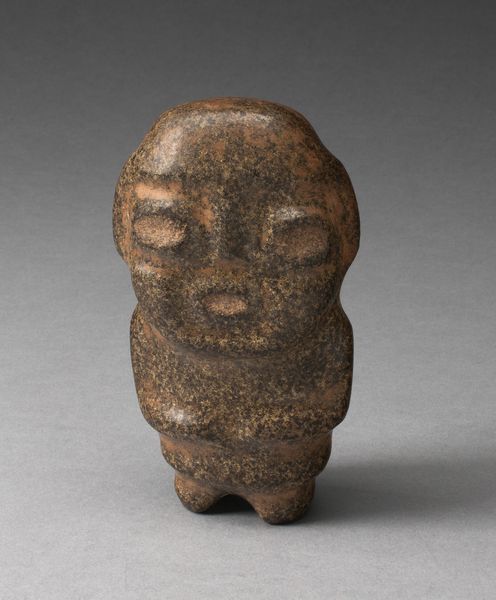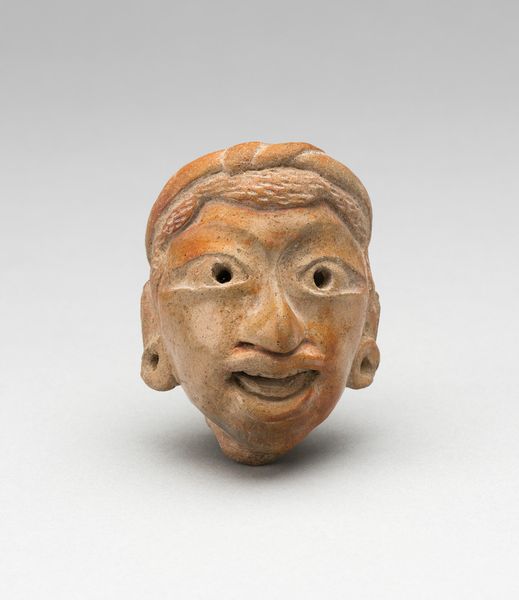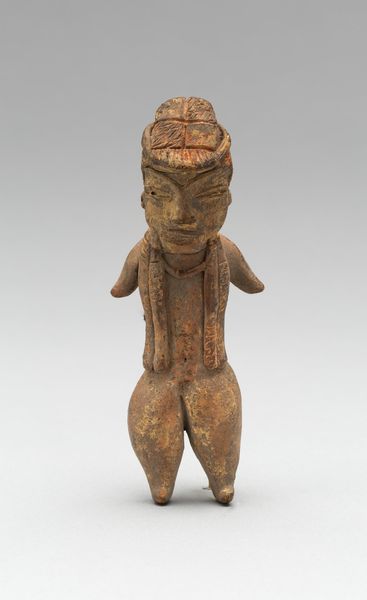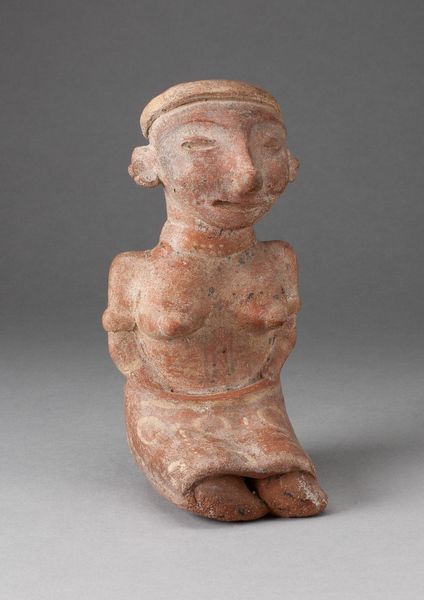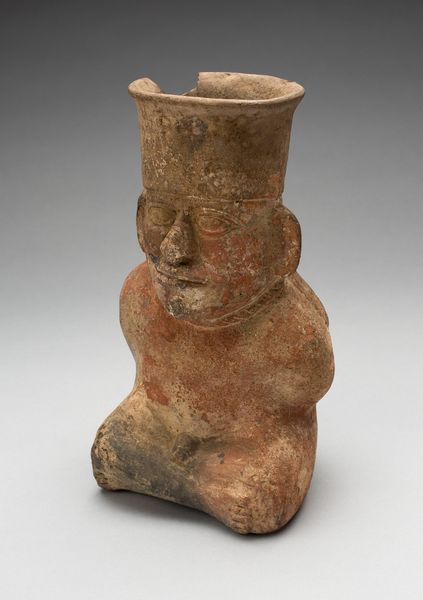
sculpture
#
portrait
#
medieval
#
sculpture
#
asian-art
#
figuration
#
sculpture
Dimensions: 9 x 3 7/8 x 4in. (22.9 x 9.8 x 10.2cm)
Copyright: Public Domain
Editor: So, this is “Head from an image of the Buddha,” made sometime in the 11th or 12th century, location, Minneapolis Institute of Art, the artist is unknown and made of sculpture. Immediately, I’m drawn in by the serenity radiating from this weathered face. There’s a real sense of peace and contemplation here. What are your first impressions, looking at it? Curator: Oh, "weathered" is absolutely the right word, I feel that. To me, this piece feels almost like uncovering an ancient truth, doesn't it? It’s more than just stone, it is almost like a echo, resonating from a distant time. See how the half-closed eyes invite you inward, rather than focusing on the outside world? I can almost feel the artist channeling something profound, beyond their own time. I am struck that despite being damaged it communicates wisdom. Editor: It really does! It’s interesting you point out the inward gaze. It makes me think about the artist's intention, right? Like, what were they hoping to communicate? Curator: Exactly! It feels intentional, doesn't it? These kinds of images of the Buddha often encourage stillness. Perhaps the artist sought to create a work that promoted inner peace and connection to an eternal reality. The lack of precise dating even enhances the mystery; doesn’t it add to its feeling of being from no time and every time? Editor: That’s such a cool way to think about it. It almost invites the viewer to lose themselves in contemplation alongside the Buddha. It really humanizes what I typically imagine about older art. Curator: Couldn’t agree more! Editor: Thanks for sharing your insight, It helped so much.
Comments
minneapolisinstituteofart about 2 years ago
⋮
In what was formerly one of the wealthiest cities and greatest religious centers of the entire world, ancient Pagan (1044–1287 CE) in central Myanmar (Burma), over 2,000 Buddhist monuments remain scattered across the arid plain. The largely abandoned brick stupas (reliquary buildings) and temples were once lavishly decorated with multicolored stucco (plaster) molding and sculpture. Sculptors in Pagan used stucco with great skill to create many of the thousands of Buddhist images commissioned by lay followers and monasteries. This sensitively modeled Buddha head reflects the meditative calm and somewhat sweet, humanistic quality associated with art of the neighboring Pala dynasty of Bengal, India. Its Buddhist sculptural traditions had reached Pagan by about 1000 CE through the portable mediums of bronze and terracotta.
Join the conversation
Join millions of artists and users on Artera today and experience the ultimate creative platform.
